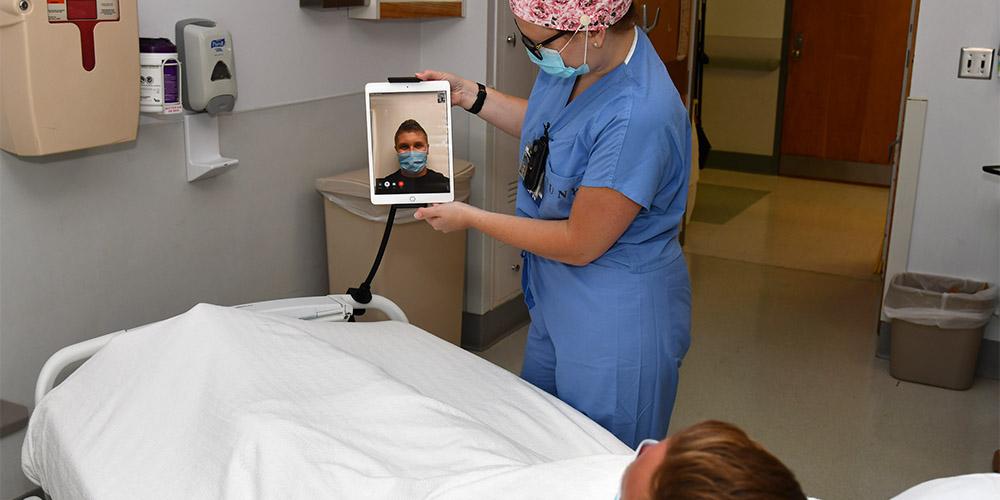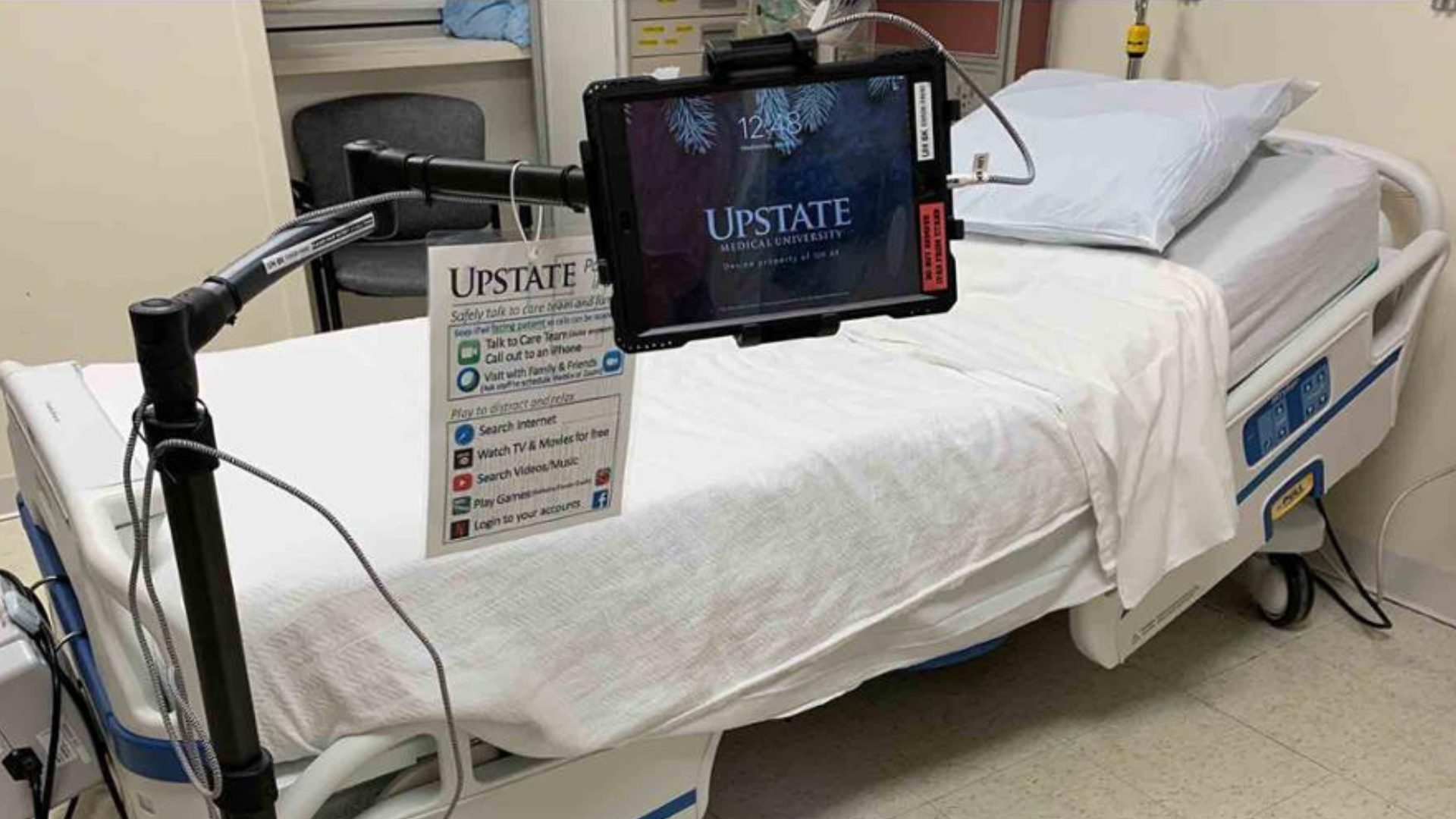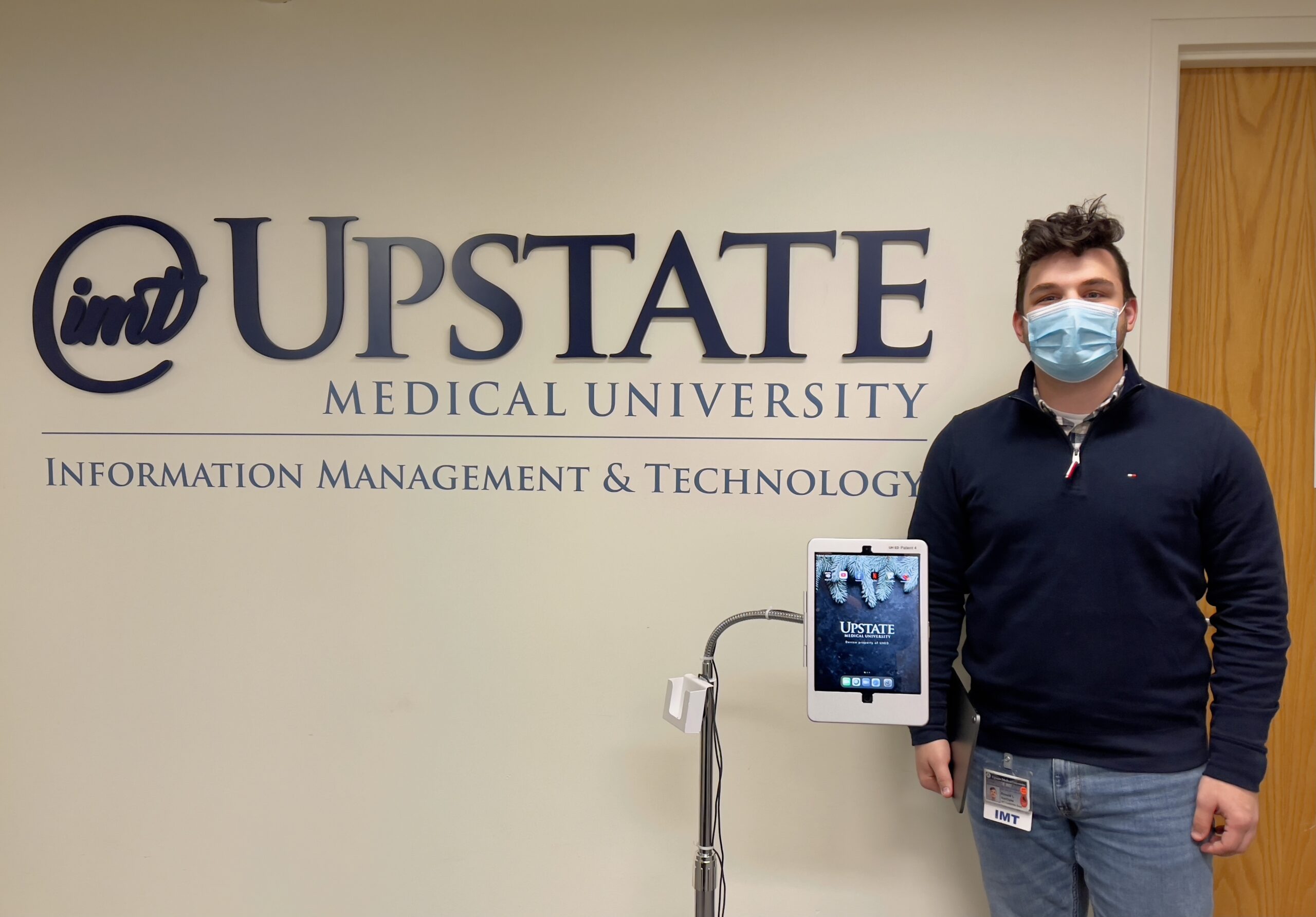My Role
- System Architecture
- IT Liaison
Credits
- Photography and Articles — Upstate Medical University
In March 2020, the world changed overnight. As the COVID-19 pandemic swept across the globe, hospitals like the one I worked at, Upstate Medical, became ground zero. Not just for care, but for innovation under pressure. Visitation restrictions and safety protocols meant that patients were suddenly cut off from their loved ones, and frontline workers faced the constant strain of personal protective equipment (PPE) shortages.
My team and I attempted to leverage iPads as a means to bridge patients isolated with their friends and family, and also as a means to conserve PPE worn by healthcare workers. iPads became a gateway for telehealth visits directly in rooms between patients and providers.
At the start, we had no infrastructure in place for managing iPads at scale. In just six months, we went from zero to over 300 fully managed devices. This deployment required close coordination with clinical teams, IT security, and infection control, as well as the development of workflows, training, and remote support models. It was a crash course in rapid digital transformation, under some of the most intense circumstances imaginable.
When we first started rolling out iPads, we used Microsoft Intune because it was already part of our environment and something we were comfortable with. At the time, it felt like the natural choice. But once we began scaling and the needs became more complex, the cracks started to show.
Intune wasn’t built for the kind of iPad management we needed in a hospital setting. We struggled with shared device support, limited control over the user experience, and no simple way to reset devices between patients. Privacy, security, and ease of use were non-negotiables in a healthcare environment, and Intune couldn’t meet those expectations.
That’s when we made the call to move to Jamf. As we were adding more iPads to our environment, we transitioned our MDM from Intune to Jamf with the surplus of devices and cycled them out.
With Jamf in place, we were finally able to support workflows that mattered most. We integrated with Epic so that iPads could be automatically wiped and re-provisioned when a patient was discharged. That meant no personal data left behind and no delays in getting the device ready for the next patient.
We also tailored the iPad experience around the patient. Devices were locked down with only the apps needed for video calls, telehealth, and spiritual support. We could manage settings remotely, keep everything secure, and give both patients and staff a simple, smooth experience.
Switching to Jamf was more than a technical decision. It solved real problems, improved care, and gave us the control we needed to keep scaling with confidence.
Today, in 2025, we are leveraging new initiatives with iPads and in-patient care with offerings like Epic’s MyChart Bedside to keep patients informed during their stay in the hospital.

More than 200 iPads installed around campus make virtual visitations possible

Upstate expands iPad program at both hospitals, allowing more patients to connect with family and friends
This initiative didn’t just fill a technical gap, it restored human connection in a time of profound separation, and reshaped how care could be delivered safely and compassionately.
